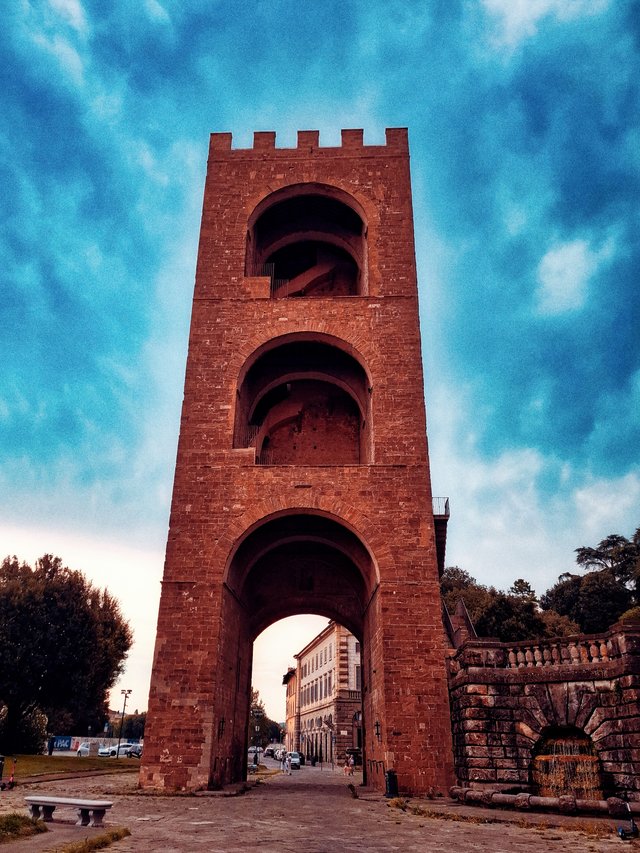📷Firenze
The Second Circle of Walls in Florence (1173)
In 1173 (as the most recent historian of Florence has shown, and not in the eleventh century as formerly supposed), the second circle of walls was built.
This included a much larger tract of the city, though many of the churches that we now consider essential to Florence still stood outside these new walls.
The Course of the Walls
- Porta San Piero: just beyond the present façade of the ruined church of San Piero Maggiore, enclosing the Borgo di San Piero.
- Porta di Borgo San Lorenzo: located north of the present Piazza.
- Swept around with two smaller gates toward the western Porta San Pancrazio (Porta San Paolo), near the present Piazza di Santa Maria Novella.
- Porta alla Carraia: on the Arno, where a bridge would later be built.
- A lower wall then ran along the Arno, taking in areas excluded from the older circuit down to the Ponte Vecchio.
- Between the Ponte Vecchio and Ponte Rubaconte, the walls turned northwards with several small gates, reaching the present Piazza di Santa Croce (outside the walls at that time).
- Beyond the old Amphitheatre, there was a gate, and from there the walls ran directly—without gate or postern—back to San Piero, where they had begun.
From Quarters to Sesti
Instead of the old Quarters (named from the gates), the city was reorganized into six Sesti (sextaries):
- Sesto di Porta San Piero
- Sesto del Duomo (named from the old Porta del Duomo)
- Sesto di Porta Pancrazio
- Sesto di San Piero Scheraggio (a church near Palazzo Vecchio, now destroyed)
- Sesto di Borgo Santissimi Apostoli (together with San Piero Scheraggio replacing the old Quarter of Porta Santa Maria)
- Sesto d'Oltrarno (across the river, then largely unfortified)
At this time, Oltrarno was mostly inhabited by the poor and lower classes, although several noble families later settled there.
The Popular Government
- Consuls: supreme officers of the state, elected annually (two for each sesto), usually nobles with popular leanings.
- Council of a Hundred: elected yearly, its members chosen mainly from the Guilds, while Consuls came from the Towers.
- Parliament of the People: could be summoned in the Piazza.
➡️ Thus, the popular government of Florence was constituted.
I am sharing photos of landscapes, moments and experiences. Nature and sea are the most visited themes in my photo collection, but any attention-grabbing aspect can be photographed. Hope you enjoy it...
| Category | #italy |
| Photo taken at | Florence - Italy |
)


Upvoted! Thank you for supporting witness @jswit.
Saludos amigo @Marcoteixeira, ¡qué belleza! La historia de Florencia es fascinante y tu publicación me hizo conocer más sobre su pasado. Me encantó la foto que compartiste. ¡Sigue compartiendo tus conocimientos y fotos!
Bendiciones...🙏🏻
Thanks for stopping by :) I really appreciate the support :) Cheers :)